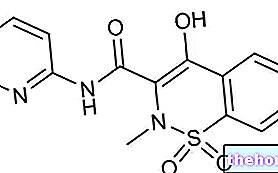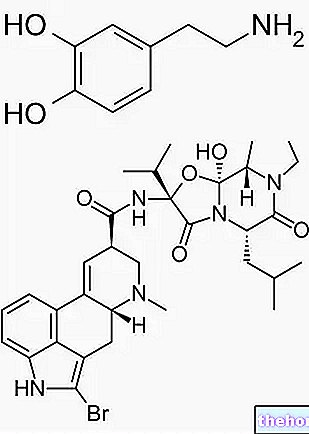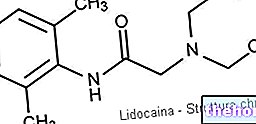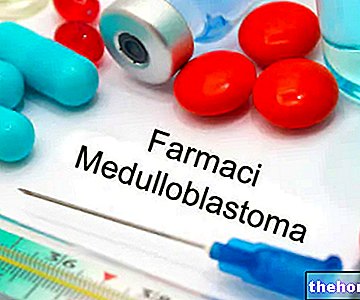Definition
Osteosarcoma - also known as "osteogenic sarcoma" - is a malignant bone tumor, which occurs mainly in children and young adults aged 10 to 30 years, but not only. In fact, this tumor can also develop in older patients.
In most cases, the tumor originates in the tibia, femur or humerus, but can also originate from other bones.
Osteosarcoma is a malignant tumor that grows rapidly and tends to metastasize.
Causes
The exact cause that causes the onset of the cancer has not yet been precisely identified. However, it appears that osteosarcoma is caused by a series of genetic mutations that transform immature bone cells into cancer cells that proliferate uncontrollably.
However, genetic alterations are not the only factors that favor the onset of cancer. In fact, the presence of some types of pathologies predisposes the individuals who suffer from it to develop osteosarcoma. These pathologies are Paget's disease (it favors the onset of cancer especially in patients over 60 years of age), retinoblastoma, Li-Fraumeni syndrome and Rothmund-Thomson syndrome.
In addition, patients undergoing radiotherapy to treat other forms of cancer are also at an increased risk of developing osteosarcoma.
Symptoms
The symptoms induced by osteosarcoma depend on the location and stage of the tumor itself.
The main symptom, however, is the continuous pain localized to the bone affected by the neoplasm. As the tumor advances, swelling and redness of the skin can also be noted in correspondence with it.
Other symptoms that may occur are movement restrictions, anemia, weight loss, asthenia, cachexia, bone fractures, bone swelling and a feeling of cold.
Information on Osteosarcoma - Drugs to Treat Osteosarcoma is not intended to replace the direct relationship between health professional and patient. Always consult your doctor and / or specialist before taking Osteosarcoma - Drugs to Treat Osteosarcoma.
Medicines
Treatment to cure osteosarcoma obviously depends on the location and stage of the tumor.
In any case, the standard therapeutic approach consists in the administration of anticancer chemotherapy (both in monotherapy and in combination therapy) and in the surgical removal of the tumor mass.
In some cases, moreover, the doctor may deem it necessary to resort to radiotherapy.
Finally, in extremely serious cases - in which chemotherapy and surgery are unable to permanently eliminate the tumor - the doctor may decide to proceed with the amputation.

Below are some anticancer drugs most used in the therapy against osteosarcoma and some examples of pharmacological specialties; it is up to the doctor to choose the active ingredient and the dosage most suitable for the patient, based on the severity of the disease, the state of health of the patient. patient and his response to treatment.
Doxorubicin
Doxorubicin (Adriblastina ®) - also known as adriamycin - is an anthracycline antibiotic with anticancer activity.
When used alone, the dose of doxorubicin usually used in adult patients is 60-75 mg / m2 of body surface area, to be administered as an intravenous infusion at 21-day intervals. In pediatric patients, however, the dose of The drug usually used is 30 mg / m2 of body surface area, always to be administered by intravenous infusion for three consecutive days; the cycle must then be repeated every four weeks.
When used together with other anticancer agents in combination therapy, however, the dose of doxorubicin used can be decreased to 25-50 mg / m2 of body surface area, to be administered by intravenous infusion every 3-4 weeks.
In any case, it should be remembered that the administration of doxorubicin should only be carried out by a doctor or by personnel specialized in the use of anticancer drugs.
Ifosfamide
Ifosfamide (Holoxan ®) is an anticancer belonging to the class of alkylating agents.
The drug can be administered by injection, or by intravenous infusion and only by a doctor or by personnel specialized in the administration of anticancer drugs.
The dose of ifosfamide usually used is 50-60 mg / kg of body weight for five consecutive days.
In any case, the exact amount of ifosfamide to be taken and the frequency of administration must be established by the doctor according to the conditions of each patient.
Cisplatin
Cisplatin (Platamine ®, Cisplatin Teva ®) is an anticancer drug also belonging to the class of alkylating agents and which can be used either alone or in combination with other antineoplastics in the treatment of osteosarcoma.
It is available in pharmaceutical formulations suitable for parenteral administration.
When used alone, the usual dose of cisplatin used is 50-120 mg / m2 of body surface area, to be administered as a slow intravenous infusion every 3-4 weeks.
When, on the other hand, cisplatin is used in combination with other anticancer drugs, then the dose of active ingredient administered must be adequately reduced.
However, even in this case, cisplatin should only be administered to patients by a doctor or by personnel specialized in the administration of anticancer chemotherapy.




























